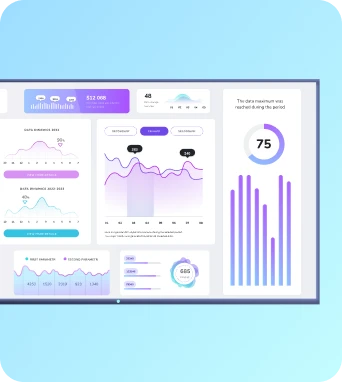Automated playback scheduling
Automated playback scheduling is the system that schedules and triggers content playback across screens automatically. It uses time‑based rules, time zones, recurring patterns, calendar events and priority overrides to ensure playlists run at the right times on Fugo.ai-managed TV dashboards and signage players without manual intervention.
Automated playback scheduling
How automated playback scheduling works in Fugo
Automated playback scheduling in Fugo begins with rule creation: administrators define when a playlist or asset becomes active by setting start and end times, recurrence patterns, and applicable time zones. Rules can target device groups so different sites or departments receive tailored schedules. Calendar integration lets schedules be triggered by external events such as public holidays, training sessions or marketing campaigns, while ad hoc overrides enable temporary changes without altering the underlying recurring rules. Priority and conflict resolution settings determine which rule takes precedence when multiple schedules overlap, ensuring predictable behaviour across the network. On the player side, Fugo players evaluate the schedule locally and pull only the necessary content, respecting bandwidth and storage constraints. Offline playback is handled by local caching and a deterministic playback engine that continues to follow the active schedule until connectivity is restored, at which point logs and status sync to the management console. Administrators can preview scheduled changes, validate timing across time zones, and publish schedules to a subset of screens for phased rollout. Audit logs and schedule history provide traceability for compliance and troubleshooting, while analytics correlate schedule execution with playback statistics to verify that intended content actually aired.
Operational considerations and best practices
Effective automated scheduling demands attention to structure and governance. Start by organising devices into logical groups that mirror operational boundaries such as region, building, floor or department; this makes it easier to apply schedules consistently and to limit the blast radius of changes. Use naming conventions for playlists and rules that include effective dates and intended audiences, and document the rationale for recurring patterns. Where possible, favour rule composition—have a baseline corporate schedule and layer event-specific rules that temporarily override it—so you preserve predictability and reduce configuration drift. Bandwidth and storage are practical constraints. Schedule heavy assets for off-peak hours and use adaptive quality or progressive download to reduce network load. Test failover scenarios by simulating outages and checking that cached content plays according to schedule. Establish a change-control process for publishing schedule modifications, including previews and staged deployments, and use Fugo’s logging and alerting to identify missed playbacks or sync failures quickly. Finally, consider governance for access control: only authorised users should create global rules, while local teams can be granted permissions to manage site-level overrides. These practices minimise errors, keep dashboards relevant, and make automated scheduling a reliable part of your signage operations.
Getting started and next steps
Keep the learning going...
Automated failover
An automated process that detects failures in systems or services and switches operations to a standby resource without human intervention to maintain availability.
Automated real-time content updates
Automated real-time content updates automatically ingest, transform and publish live data feeds to digital signs and TV dashboards. They synchronise content with external sources such as APIs, sensors and business systems, ensuring displays present current metrics, schedules and alerts across networks with minimal manual oversight and immediate propagation of changes.



